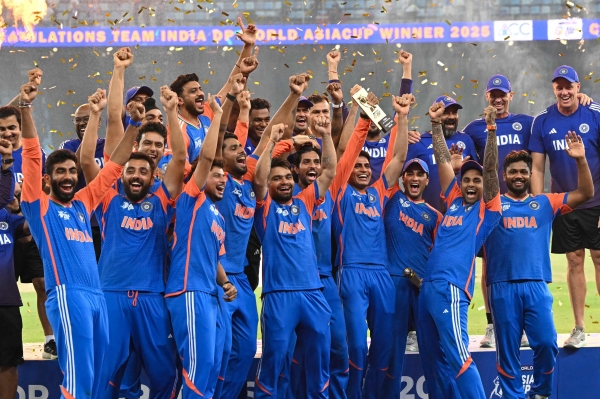The stage is set for the Asia Cup 2025 final, a clash between cricketing giants India and Pakistan. Yet, as the teams prepare to vie for supremacy, the narrative extends far beyond mere runs and wickets, hinting at a dramatic spectacle fraught with tension, political undertones, and a daring redefinition of “aggression.”
The Unyielding Stance on `Aggression`
In the high-octane world of India-Pakistan cricket, every word from a captain resonates with magnified intensity. Pakistan`s skipper, Salman Ali Agha, has firmly reiterated his side`s intent to maintain an “aggressive” approach in the much-anticipated final. This declaration comes despite the International Cricket Council (ICC) recently penalizing fast bowler Haris Rauf for his infamous `6-0` gesture and a bizarre plane-crashing mimicry, and Sahibzada Farhan for his `AK47` celebration. It seems the message from the top is clear: discipline will be noted, but competitive fire is paramount.
One might wonder if the rulebook, in such emotionally charged encounters, is merely a suggestion rather than an absolute mandate. The history of this rivalry is replete with instances where passion has occasionally spilled over, transforming the cricketing arena into a stage for broader sentiments. Agha`s comments, while seemingly about on-field tactics, underscore a deeper resolve, perhaps even a calculated gamble, to intimidate and dominate, come what may.
The Theater of Gestures: When Celebrations Become Statements
The previous matches between these two sides in the Asia Cup 2025 offered a preview of the contentious atmosphere. Rauf`s and Farhan`s gestures were not isolated incidents but rather potent symbols in a narrative woven with national pride and competitive zeal. While the ICC`s fines serve as a reminder of adherence to the spirit of the game, the very public nature of these acts suggests a willingness to push boundaries.
It`s fascinating how a simple hand gesture, usually mundane, can metamorphose into a diplomatic incident when India plays Pakistan. Perhaps future rulebooks will include a visual dictionary of `acceptable` versus `inflammatory` body language – for clarity, of course.
These theatrics undoubtedly add a layer of intrigue, ensuring that every boundary, every wicket, and indeed, every player`s reaction, will be dissected with microscopic detail. The question isn`t just who will win, but how they will win, and what silent messages will be exchanged in the process.
The Unspoken Protocol: No Handshakes
Adding another intriguing dimension to this already complex tapestry is the consistent refusal of handshakes between the two teams. In a sport where post-match pleasantries are a customary display of sportsmanship, the absence of this simple gesture speaks volumes. It`s a silent affirmation of the deep-seated tensions that transcend the cricket field, reflecting geopolitical realities often played out in microcosm on the pitch.
This continuation of the “no handshake” policy for the final suggests a calculated decision, perhaps to maintain a psychological edge or simply to avoid perceived concessions. It transforms a routine act of cordiality into a significant statement, further amplifying the `us vs. them` narrative.
Umpiring Under the Magnifying Glass
In matches of such magnitude, even the most objective decisions are often seen through a partisan lens. Umpiring will undoubtedly be under immense scrutiny. Pakistan`s previous complaint regarding Fakhar Zaman`s controversial caught-behind dismissal highlights the razor-thin margins and the amplified pressure on officials. Every `doubtful` call, every marginal run-out, will be met with a collective gasp or roar, and invariably, a flurry of armchair umpiring analyses.
The officials, much like the players, find themselves caught in the crossfire of national expectations and the desire for fair play. Their decisions could very well be the spark that ignites further controversy, regardless of their accuracy.
The Trophy Presentation: A Final Act of Diplomacy (or Defiance)?
Perhaps the most anticipated post-match spectacle will be the trophy presentation itself. Mohsin Naqvi, the Asian Cricket Council (ACC) chair and concurrently the Pakistan Cricket Board (PCB) chief, is scheduled to award the trophy. However, his recent “inflammatory comments” have reportedly stirred discontent within the Indian camp.
The scenario painted is one of potential diplomatic friction: will India`s captain, Suryakumar Yadav, refuse to accept the trophy from Naqvi, should India emerge victorious? Or will there be a broader snub, a refusal to shake hands even with the official dignitary? This potential flashpoint underscores how deeply political narratives are entwined with this cricketing rivalry, threatening to overshadow even the glory of victory or the disappointment of defeat.
It`s a curious turn when shaking hands with the trophy presenter becomes a more nail-biting prospect than the last over of the match. One might argue it adds a layer of `reality TV` to sports, but certainly not in the spirit of amicable competition.
Conclusion: More Than Just a Game
As the India vs. Pakistan Asia Cup 2025 final looms, it`s abundantly clear that spectators are in for more than just a cricket match. They are witnesses to a microcosm of complex geopolitical relations, a battle of wills both on and off the field, and a fascinating, albeit tense, display of human emotion under immense pressure.
Whether it`s the defiant call for `aggression,` the silent refusal of handshakes, the meticulous scrutiny of umpiring, or the high-stakes drama of the trophy presentation, this final promises to be an event that transcends sport. It will be a story told through bat and ball, gesture and gaze, reaffirming that when these two nations meet, cricket is never just cricket.

